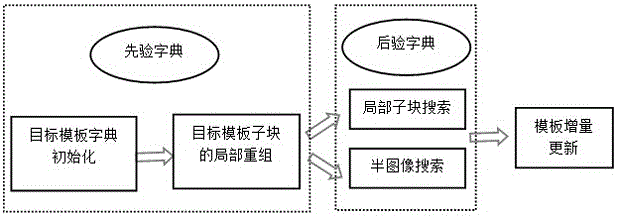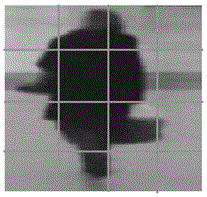A Target Tracking Method Based on Posterior Template Dictionary Learning
A target tracking and dictionary learning technology, applied in the field of target tracking, can solve the problems of tracking failure, model drift, and the template dictionary cannot represent the apparent change of the target, and achieves the effect of avoiding over-fitting, strong practicability, and high computational efficiency.
- Summary
- Abstract
- Description
- Claims
- Application Information
AI Technical Summary
Problems solved by technology
Method used
Image
Examples
Embodiment Construction
[0038] The present invention is specifically described through the following implementation steps, just to further explain the present invention, and cannot be misunderstood as limiting the scope of protection of the present invention. Relevant technical personnel can make non-essential changes and changes to the above-mentioned content of the invention according to actual needs. Adjust to achieve a more ideal effect in practical applications.
[0039] Such as figure 1 as shown, figure 1 It is a flow chart of the method of the present invention. The invention proposes a target tracking method based on posterior template dictionary learning. The specific operating hardware and programming language of the algorithm of the present invention are not limited, that is, it can be realized by various programming languages, so other basic working modes will not be repeated here.
[0040] The implementation of the present invention adopts a Dell computer equipped with a 3.2G Hz centr...
PUM
 Login to View More
Login to View More Abstract
Description
Claims
Application Information
 Login to View More
Login to View More - R&D
- Intellectual Property
- Life Sciences
- Materials
- Tech Scout
- Unparalleled Data Quality
- Higher Quality Content
- 60% Fewer Hallucinations
Browse by: Latest US Patents, China's latest patents, Technical Efficacy Thesaurus, Application Domain, Technology Topic, Popular Technical Reports.
© 2025 PatSnap. All rights reserved.Legal|Privacy policy|Modern Slavery Act Transparency Statement|Sitemap|About US| Contact US: help@patsnap.com



